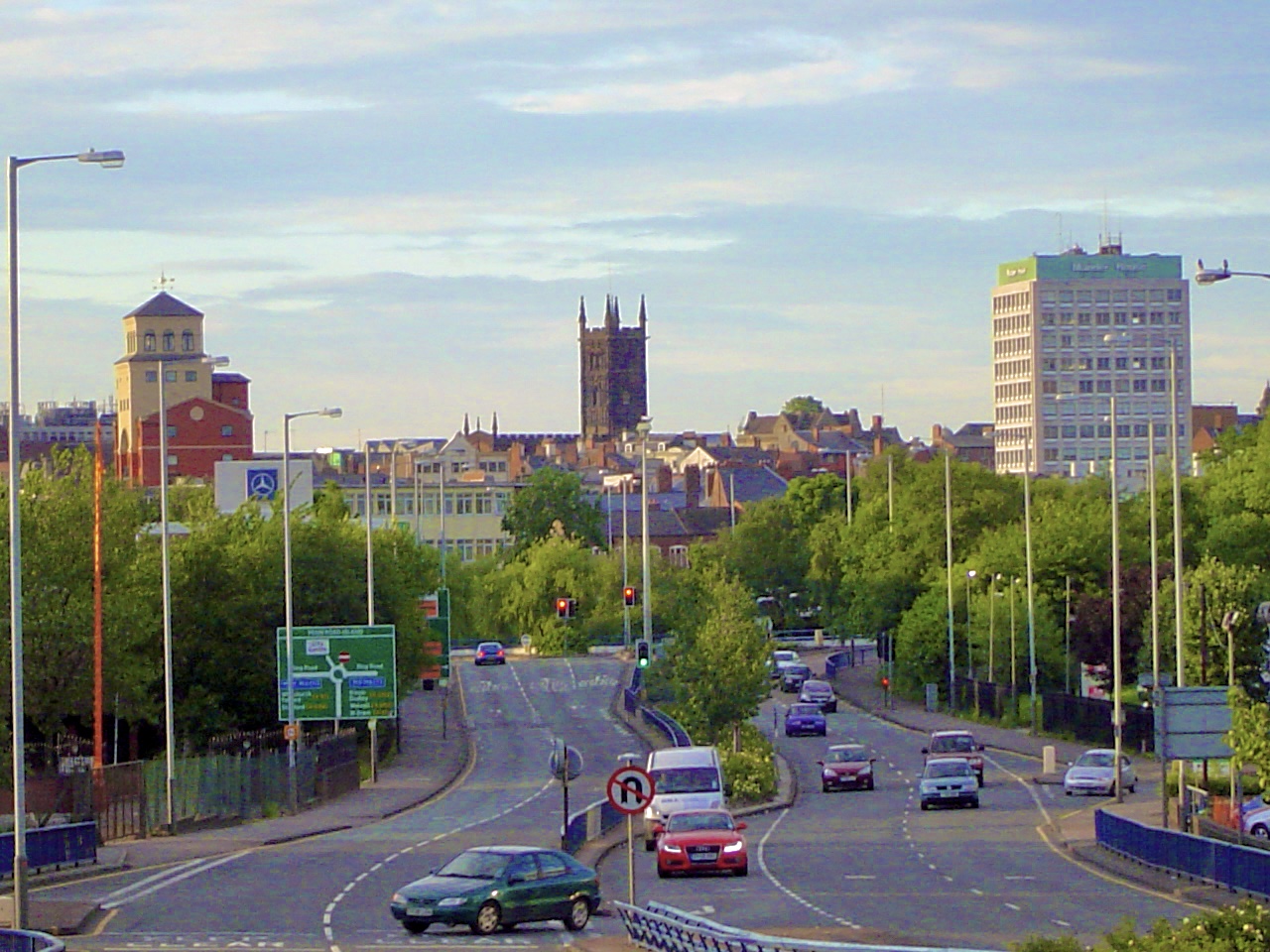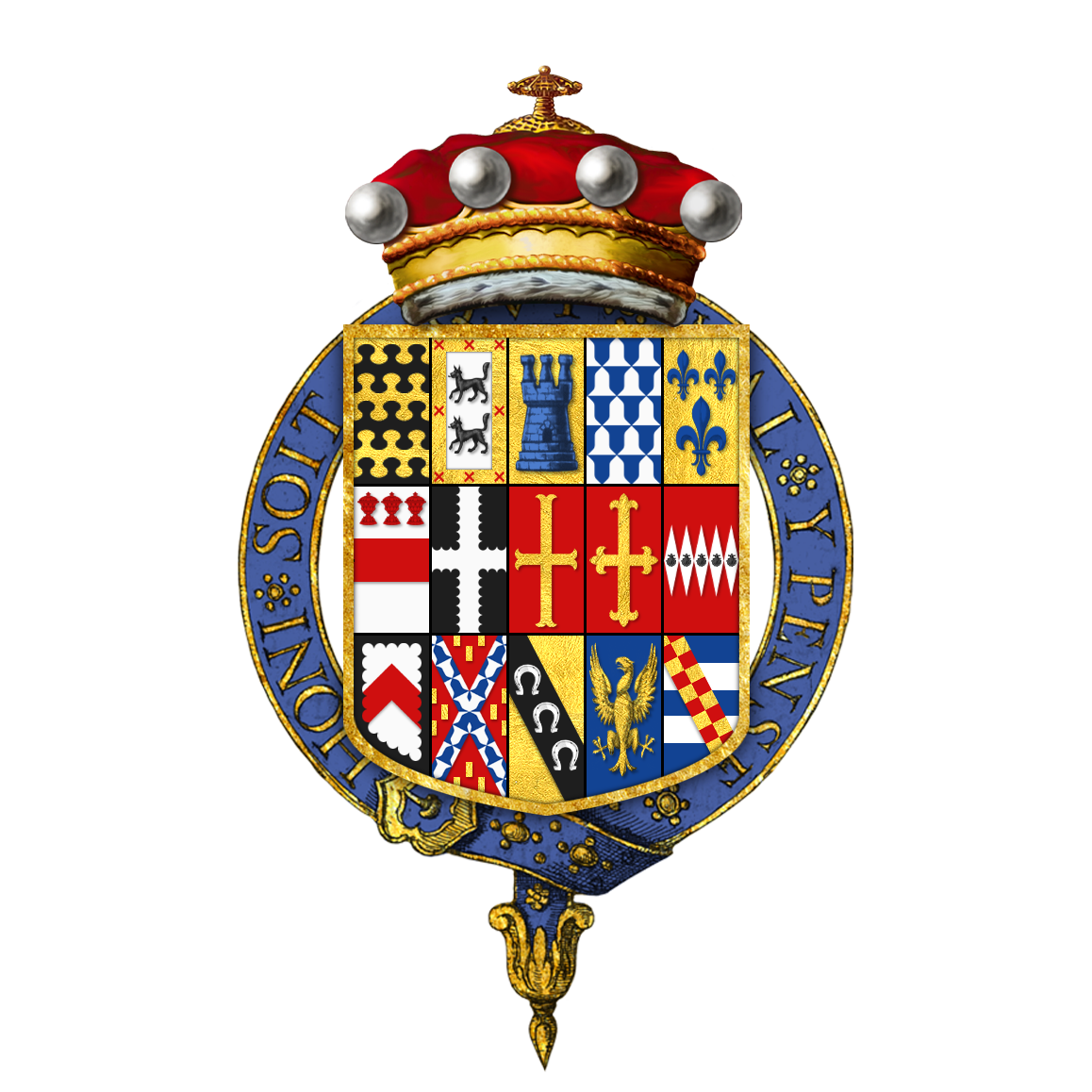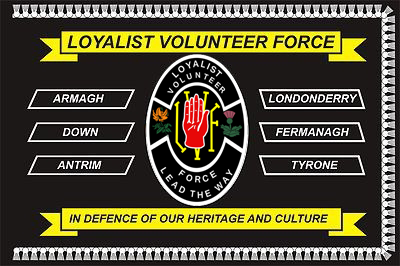|
Mountnorris
Mountnorris is a small village and townland in County Armagh, Northern Ireland. The village also extends into the townland of Tullyherron. It lies about six miles south of Markethill. It is within the Armagh, Banbridge and Craigavon local government area. It had a population of 155 people (79 households) in the 2011 Census. (2001 Census: 165 people) History The townland of Mountnorris was historically called ''Aghnecranagh'' and ''Aghenecranagh'' (). In 1600 built an earthwork fort and left a garrison of 400 men under the command of Captain |
Billy Wright (loyalist)
William Stephen Wright (7 July 1960 – 27 December 1997) was a Northern Irish loyalist paramilitary leader during the Troubles. He joined the Ulster Volunteer Force (UVF) in his hometown of Portadown around 1975. After spending several years in prison, he became a born again Christian preacher. Wright resumed his UVF activities around 1986 and became commander of its Mid-Ulster Brigade in the early 1990s, taking over from Robin "the Jackal" Jackson. According to the Royal Ulster Constabulary, Wright was involved in the sectarian killings of up to 20 Catholics, although he was never convicted for any. It has been alleged that Wright, like his predecessor, was working with RUC Special Branch. Wright drew media attention during the Drumcree standoffs of 1995 and 1996, when he supported the Protestant Orange Order in its bid to march its traditional route through the Catholic area of Portadown. In 1994, the UVF and other paramilitary groups had called ceasefires. However, dur ... [...More Info...] [...Related Items...] OR: [Wikipedia] [Google] [Baidu] |
Glenanne Barracks Bombing
The Glenanne barracks bombing was a large truck bomb attack carried out by the Provisional IRA against a British Army (Ulster Defence Regiment) base at Glenanne, near Mountnorris, County Armagh. The driverless lorry was rolled down a hill at the rear of the barracks and crashed through the perimeter fence. The bombing took place on 31 May 1991 and left three soldiers killed and 14 people wounded, four of them civilians. Background The bombing took place at a time when the Northern Ireland Office arranged multi-party talks (known as the Brooke/Mayhew talks) on the future of Northern Ireland. Sinn Féin members were not invited to attend because of their links with the IRA, which prevented them from being recognised as a 'constitutional' party. The talks ended in failure soon after. Built in 1972, the barracks housed two companies of the 2nd Battalion of the Ulster Defence Regiment (UDR). Seen as an outpost, it sat on the dividing line between a Protestant area and a Catholic are ... [...More Info...] [...Related Items...] OR: [Wikipedia] [Google] [Baidu] |
County Armagh
County Armagh (, named after its county town, Armagh) is one of the six counties of Northern Ireland and one of the traditional thirty-two counties of Ireland. Adjoined to the southern shore of Lough Neagh, the county covers an area of and has a population of about 175,000. County Armagh is known as the "Orchard County" because of its many apple orchards. The county is part of the provinces of Ireland, historic province of Ulster. Etymology The name "Armagh" derives from the Irish word ' meaning "height" (or high place) and '. is mentioned in ''Lebor Gabála Érenn, The Book of the Taking of Ireland'', and is also said to have been responsible for the construction of the hill site of (now Navan Fort near Armagh, Armagh City) to serve as the capital of the kings (who give their name to Ulster), also thought to be 's ''height''. Geography and features From its highest point at Slieve Gullion, in the south of the county, Armagh's land falls away from its rugged south with Carr ... [...More Info...] [...Related Items...] OR: [Wikipedia] [Google] [Baidu] |
List Of Towns And Villages In Northern Ireland
This is an alphabetical list of towns and villages in Northern Ireland. For a list sorted by population, see the list of settlements in Northern Ireland by population. The towns of Armagh, Lisburn and Newry are also classed as cities (see city status in the United Kingdom). The Northern Ireland Statistics and Research Agency (NISRA) uses the following definitions: * Town – population of 4,500 or more ** Small Town – population between 4,500 and 10,000 ** Medium Town – population between 10,000 and 18,000 ** Large Town – population between 18,000 and 75,000 * Intermediate settlement – population between 2,250 and 4,500 * Village – population between 1,000 and 2,250 * Small villages or hamlets – population of less than 1,000 Towns are listed in bold. __NOTOC__ A Acton, Aghacommon, Aghadowey, Aghadrumsee, Aghagallon, Aghalee, Ahoghill, Aldergrove, Altamuskin, Altishane, Altmore, Annaclone, Annaghmore, Annahilt, Annahugh, Annalong, Annsborough, Antri ... [...More Info...] [...Related Items...] OR: [Wikipedia] [Google] [Baidu] |
Charles Blount, 1st Earl Of Devon
Charles Blount, 1st Earl of Devonshire, KG (pronounced ''Blunt''; 15633 April 1606) was an English nobleman and soldier who served as Lord Deputy of Ireland under Queen Elizabeth I, and later as Lord Lieutenant of Ireland under King James I. He succeeded to the family title as 8th Baron Mountjoy in 1594, before commanding the Crown's forces during the final years of Tyrone's Rebellion. He was able to defeat Tyrone at the Battle of Kinsale, and captured his headquarters at Dungannon before peace was agreed at the Treaty of Mellifont in 1603. Early life The second son of James, 6th Baron Mountjoy and Catherine, only daughter of Sir Thomas Leigh (Commissioner for Suppression of the Monasteries), Charles Blount was among the most distinguished of the family, succeeding as 8th Baron Mountjoy on the death of his unmarried elder brother William, 7th Baron Mountjoy. The good fortune of his youthful and handsome looks found favour with Queen Elizabeth I which aroused the jealou ... [...More Info...] [...Related Items...] OR: [Wikipedia] [Google] [Baidu] |
Edward Blaney
Edward Blayney, 1st Baron Blayney, also Blainey or Blaney (1570–1629) was a Welsh soldier and politician in Ireland. He became Baron Blayney of Monaghan in the Peerage of Ireland. He gave his name to the town of Castleblayney, which he founded in about 1611. Biography He was born at Gregynog Hall in Tregynon, Montgomeryshire, a younger son of David Lloyd Blayney and his wife Elizabeth Jones. He became a soldier, saw service in Spain and the Low Countries, and came to Ireland in 1598 with Robert Devereux, 2nd Earl of Essex. After Lord Mountjoy occupied Moyry Pass in 1600 and dismantled the Irish earthworks there, he marched to Mountnorris (halfway between Newry and Armagh) where he built an earthwork fort and left a garrison of 400 men under the command of Blayney, who was then a captain. In the Parliament of 1613-15 he sat in the Irish House of Commons as MP for Monaghan. He was sworn a member of the Privy Council of Ireland in 1615. In the 1620s he and his eldest son Hen ... [...More Info...] [...Related Items...] OR: [Wikipedia] [Google] [Baidu] |
The Royal School, Armagh
The Royal School, Armagh is a co-educational voluntary grammar school, founded in the 17th century, in the city of Armagh in Northern Ireland. It has a boarding department with an international intake. It is a member of the Headmasters' and Headmistresses' Conference. History One of a number of ''free schools'' created in 1608 by King James I of England & Ireland, the school was to educate the sons of local Protestant merchants and farmers during the plantation of Ulster. It has four "sister" schools: Royal School Dungannon in Dungannon, Enniskillen Royal Grammar School in Enniskillen, the Royal School Cavan in Cavan, and the Royal and Prior School in Raphoe. In November 2013 the school was placed 78th in ''The Sunday Times Top 200 UK Schools Guide'' for results at A level and GCSE combined. In May 2014, an inspection by the Education and Training Inspectorate found the leadership and management of the school to be 'outstanding'. Originally intended to be sited at Mountnorris ... [...More Info...] [...Related Items...] OR: [Wikipedia] [Google] [Baidu] |
Andrew Trew Wood
Andrew Trew Wood (26 August 1826 – 21 January 1903) was a Canadian businessman and parliamentarian. Born in Mountnorris, County Armagh, Ireland, the son of David Wood, a merchant, and Frances Bigham Trew, he emigrated to Canada sometime before 1846. He found employment at James Shepard Ryan's hardware store in Toronto in that year; in 1848, he was put in charge of the branch in Hamilton. In 1856, he opened his own business. Wood was a founding director of the Hamilton and Lake Erie Railway Company in 1869 and the Ontario Cotton Mills Company in 1881. In 1893, he became one of the owners of the Hamilton Blast Furnace Company; when it merged with the Ontario Rolling Mills Company to form the Hamilton Steel and Iron Company in 1899, Wood served as its first president. A Liberal, he served three terms as a member of parliament in the House of Commons of Canada. First elected in the Canadian federal elections of 1874, the election was later declared void. He was re-electe ... [...More Info...] [...Related Items...] OR: [Wikipedia] [Google] [Baidu] |
Armagh City And District Council
Armagh City and District Council was a district council in County Armagh in Northern Ireland. It merged with Banbridge District Council and Craigavon Borough Council in May 2015 under local government reorganisation in Northern Ireland to become Armagh, Banbridge and Craigavon District Council. The Council area included the city of Armagh, as well as the surrounding area. City status was officially conferred in 1995. Armagh has a long reputation as an administrative centre and the headquarters of the Southern Education and Library Board and the Southern Health and Social Services Board were located in the city. The Armagh Outreach Centre was established in 1995 and is linked to the Queen's University of Belfast. The heads of both the Roman Catholic Church in Ireland and the Church of Ireland reside in the city. The district consisted of four electoral areas: Armagh City, Cusher, Crossmore and The Orchard, from which 22 councillors were elected for a period of four years b ... [...More Info...] [...Related Items...] OR: [Wikipedia] [Google] [Baidu] |
Ulster Defence Regiment
The Ulster Defence Regiment (UDR) was an infantry regiment of the British Army established in 1970, with a comparatively short existence ending in 1992. Raised through public appeal, newspaper and television advertisements,Potter p25 their official role was the "defence of life or property in Northern Ireland against armed attack or sabotage" but unlike troops from Great Britain they were never used for "crowd control or riot duties in cities". At the time the UDR was the largest infantry regiment in the British Army, formed with seven battalions plus another four added within two years. It consisted mostly of part-time volunteers until 1976, when a full-time cadre was added. Recruiting in Northern Ireland at a time of intercommunal strife, some of its (mostly Ulster Protestant) members were involved in sectarian killings. The regiment was originally intended to more accurately reflect the demographics of Northern Ireland, and began with Catholic recruits accounting for 18% of ... [...More Info...] [...Related Items...] OR: [Wikipedia] [Google] [Baidu] |
Irish National Liberation Army
The Irish National Liberation Army (INLA, ga, Arm Saoirse Náisiúnta na hÉireann) is an Irish republican socialist paramilitary group formed on 10 December 1974, during the 30-year period of conflict known as " the Troubles". The group seeks to remove Northern Ireland from the United Kingdom and create a socialist republic encompassing all of Ireland. With membership estimated at 80–100 at their peak, it is the paramilitary wing of the Irish Republican Socialist Party (IRSP). The INLA was founded by former members of the Official Irish Republican Army who opposed that group's ceasefire. It was initially known as the "People's Liberation Army" or "People's Republican Army". The INLA waged a paramilitary campaign against the British Army and Royal Ulster Constabulary (RUC) in Northern Ireland. It was also active to a lesser extent in the Republic of Ireland, Great Britain and mainland Europe. High-profile attacks carried out by the INLA include the Droppin Well bo ... [...More Info...] [...Related Items...] OR: [Wikipedia] [Google] [Baidu] |
Loyalist Volunteer Force
The Loyalist Volunteer Force (LVF) is a small Ulster loyalist paramilitary group in Northern Ireland. It was formed by Billy Wright in 1996 when he and his unit split from the Ulster Volunteer Force (UVF) after breaking its ceasefire. Most of its members came from the UVF's Mid-Ulster Brigade, which Wright had commanded. In a two-year period from August 1996, the LVF waged a paramilitary campaign in opposition to Irish republicanism and the Northern Ireland peace process. During this time it killed at least 14 people in gun and bomb attacks, almost all of them Catholic civilians killed at random. The LVF called off its campaign in August 1998 and decommissioned some of its weapons, but in the early 2000s a loyalist feud led to several killings. Since then, the LVF has been largely inactive, but its members are believed to have been involved in rioting and organized crime. In 2015, the security forces stated that the LVF "exists only as a criminal group" in Mid-Ulster and Antri ... [...More Info...] [...Related Items...] OR: [Wikipedia] [Google] [Baidu] |



.jpg)
